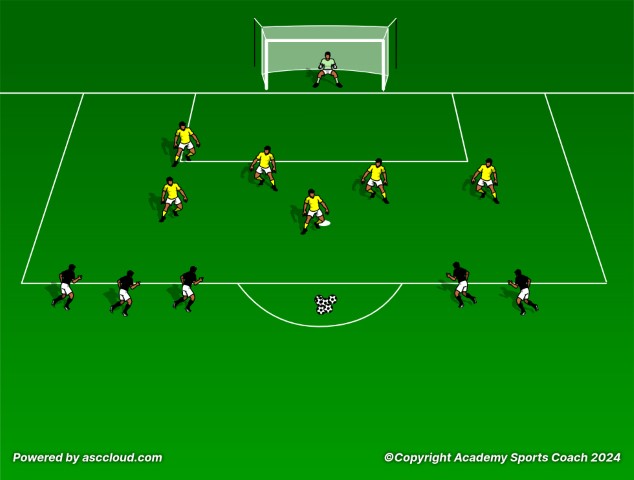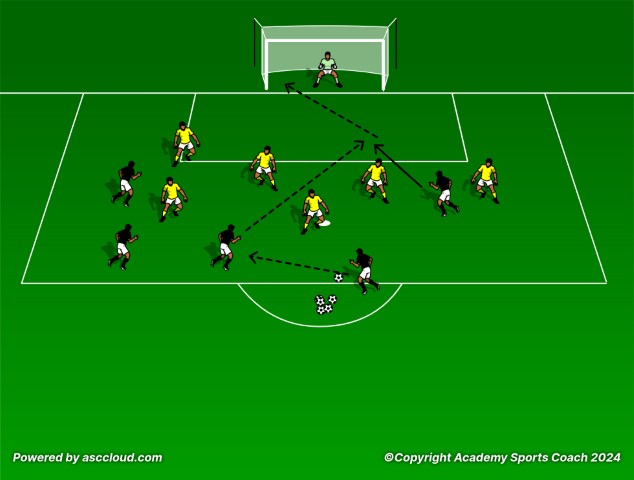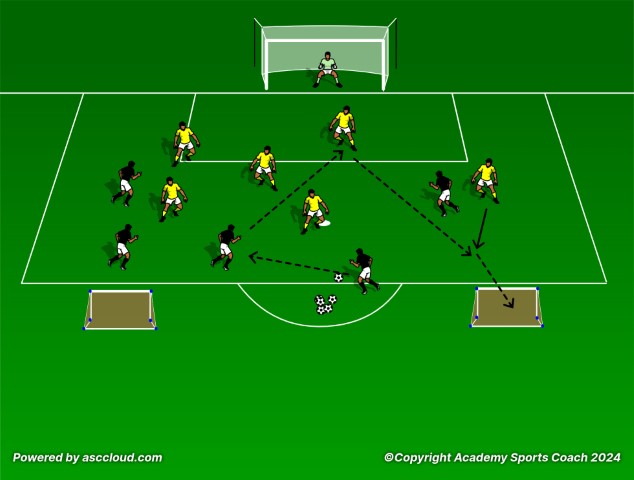By Matt Carroll -
Oftentimes in sessions coaches have to utilize limited space. Sometimes you have two goals, sometimes one, and others no full sized goals. Coaches need to be creative in creating directional, game-like challenges for their players with their small sided games and the 10 Ball Game is a fun and challenging way in which to do this.

To start, create your grid. This is dependent on space available and what you want your players to do. If you want to recreate the confined spaces of the attacking third make the box narrow, if you want to recreate buildup in the midfield create a wider box. The common set up points are that there should be a goal, two teams, and there should be a small “no-go zone” set up on the opposite end of the goal for the attacking team to store their balls and initiate attacks.
One team should be designated the attacking team and the other defending. You can designate a consistent keeper, rotate a keeper for each team, or have player rotate keepers every “new ball”. The game starts with the attacking team bringing a ball into play from the no-go zone. The ball can be passed or dribbled in, but once it enters play is live. The attacking team looks to score, while the defending team looks to gain possession from the opposition and clear the ball from the designated box. If the attacking team scores they gain a point, if the defending team clears the ball they get a point. You could also score the game where most goals is the winner. If the ball is cleared from the area or is scored the attacking team re-enters the no-go zone and takes a new ball, restarting the process. This is done until all 10 balls have been used, and then teams switch rolls with the attacking team becoming the defending team and vice versa.

Alternatively, you can create a system of scoring for the defense where they can score on breakout goals or dribble into areas to score points. The first version of the game puts a heavy focus on possession as players that rush their touch or pass and give up possession are punished by losing one of their finite attempts on goal. In the second version the defense is less lilkely to clear a ball, so it offers the attacking team the opportunity to press and win the ball back, extending the games and creating a new set of coaching points. In this way, the game can be modified to meet the needs of different coaching topics that need to be addressed in the attacking third.

By Matt Carroll -


